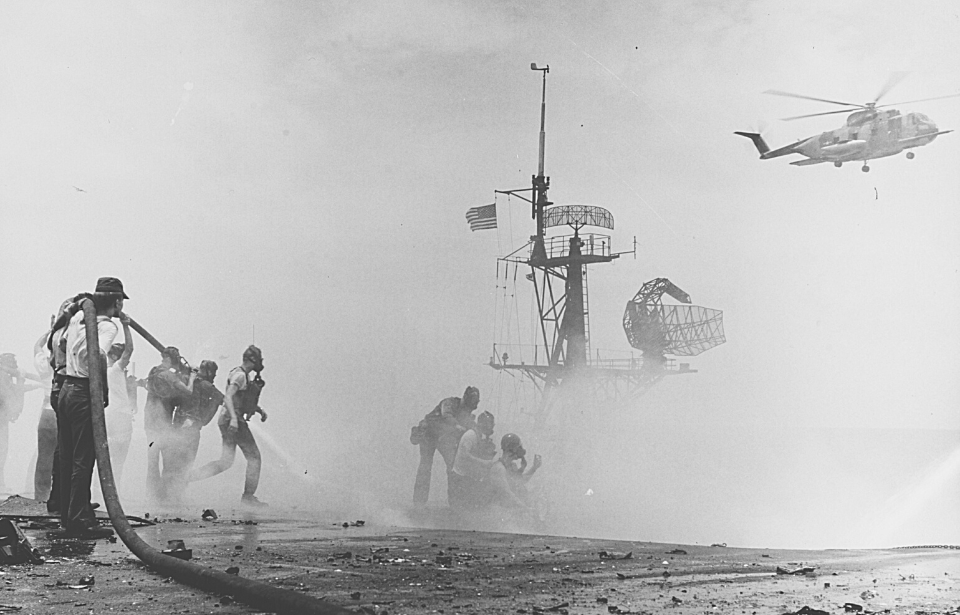The USS Forrestal (CV-59) served the US Navy for nearly four decades. During that time, she saw her fair share of combat, but no amount of fighting caused as much damage as the accident that occurred on her flight deck in 1967. The disaster caused a great loss of life, and the damage to the aircraft carrier was plentiful and expensive.
The only good thing to come out of the incident was the training reforms the Navy quickly put in place following that painful day.
The USS Forrestal‘s early service in the Atlantic and Mediterranean
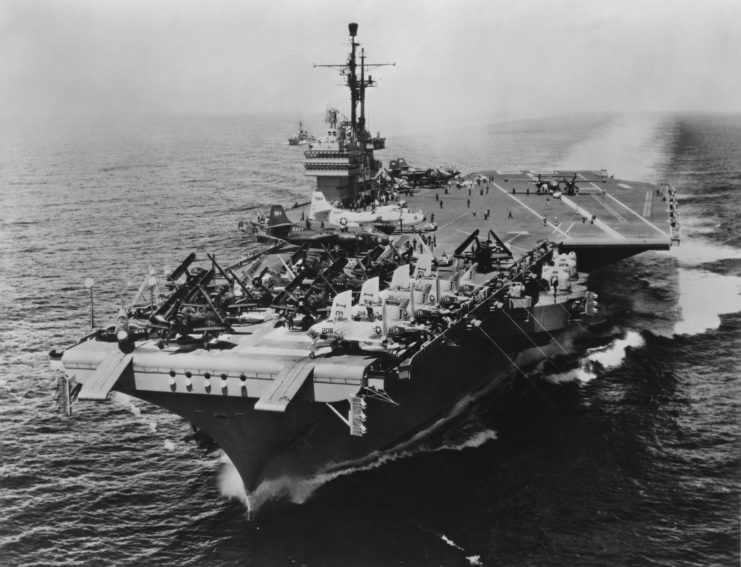
The USS Forrestal was the lead ship in her class of aircraft carriers and was commissioned on October 1, 1955. She was the first to be designed to operate jet aircraft, becoming the Navy’s first “supercarrier.”
Forrestal was first put into service in the Atlantic Ocean during the Suez Crisis and was deployed to the Mediterranean with the US Sixth Fleet. Before being sent to provide additional airpower during the Vietnam War, she was deployed to Beirut during the 1958 Lebanon crisis, spending three days along the coast.
In November 1963, Forrestal made history when a Lockheed C-130 Hercules made 21 full-stop landings and takeoffs from her deck, setting the record for the largest and heaviest aircraft to land on a carrier. The following year, the vessel was sent to Brazil by US President Lyndon B. Johnson to support the successful military coup d’état against President João Goulart.
The explosion on that fateful day
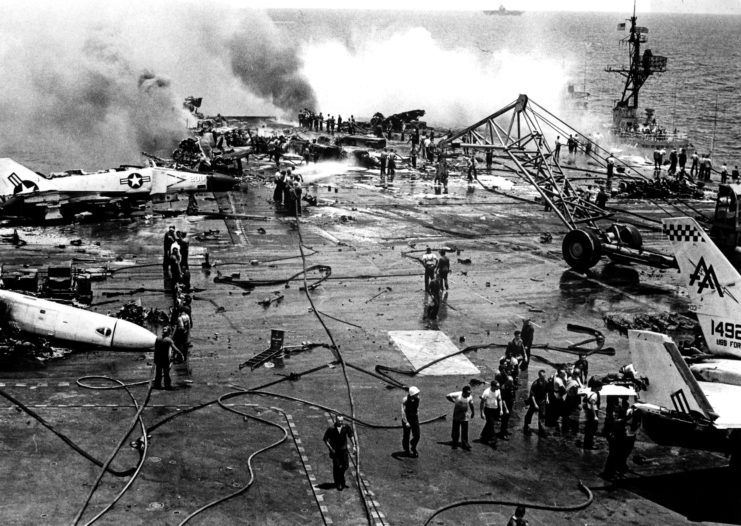
In June 1967, the USS Forrestal was deployed to the Gulf of Tonkin in the South China Sea, just off the coast of north Vietnam. While there, aircraft from Attack Carrier Air Wing 17 (CVW-17) flew a number of successful missions from the vessel, in what was then the most intense air raid operation in the Navy’s history.
On July 29, 1967, an electrical surge in one of the McDonnell Douglas F-4B Phantom IIs onboard Forrestal caused an Mk 32 “Zuni” Five-Inch Folding-Fin Aircraft Rocket (FFAR) to accidentally launch. It blasted across the deck and slammed into a parked, combat-loaded Douglas A-4E Skyhawk, dislodging its 400-gallon external fuel tank. Inside the aircraft was late Sen. John McCain, who was able to escape from the cockpit.
The impact of the rocket caused fuel from the A-4E to leak and catch fire. As the blaze spread, the first two firefighting teams were killed trying to contain the first explosion. Nine more blasts followed within the first five minutes of the initial rocket launch. Eventually, the fire spread enough to detonate a 1,000-pound AN-M65 bomb.
The losses onboard the USS Forrestal were devastating
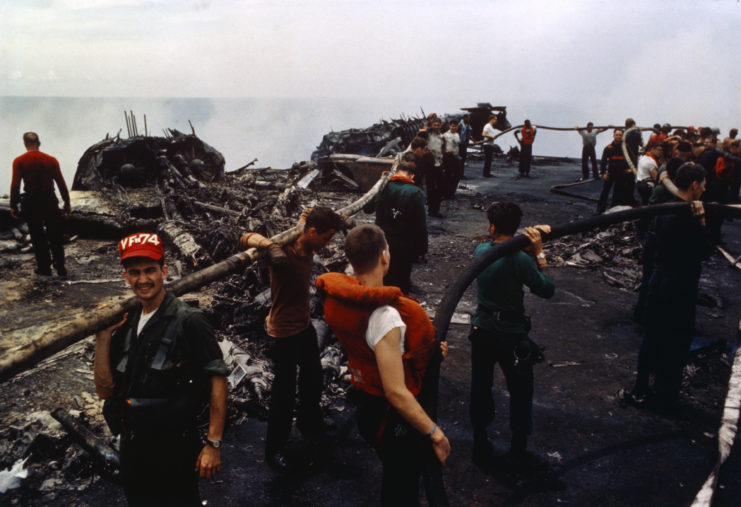
The fire continued to spread and pilots found themselves trapped in their aircraft. It took a full day for the blaze to be contained, as the detonation of the first bomb had blown a hole in the flight deck, allowing fuel to seep to the lower levels of the USS Forrestal. The later explosions put more holes in the deck, with 50 crewmen being killed when one went off in the section over their sleeping quarters.
When the fire was finally extinguished, thanks to the help of the destroyers USS Rupertus (DD-851) and George K. MacKenzie (DD-836), it became evident just how many casualties there were. Many were transported to the hospital ship USS Repose (AH-16).
The disaster caused the deaths of 134 sailors, while hundreds more were injured. As well, over 20 aircraft were destroyed, including F-4Bs, A-4Es and North American RA-5C Vigilantes. The aircraft carrier herself suffered more than $70 million in damages.
Fires at sea cause a great dilemma for sailors; you either fight the fire, burn or jump. There’s nowhere to escape. Though many survived the disaster onboard Forrestal, others suffered a worst fate. The explosions caused the greatest loss of life on a US Navy ship since the Second World War.
The US Navy changed its training
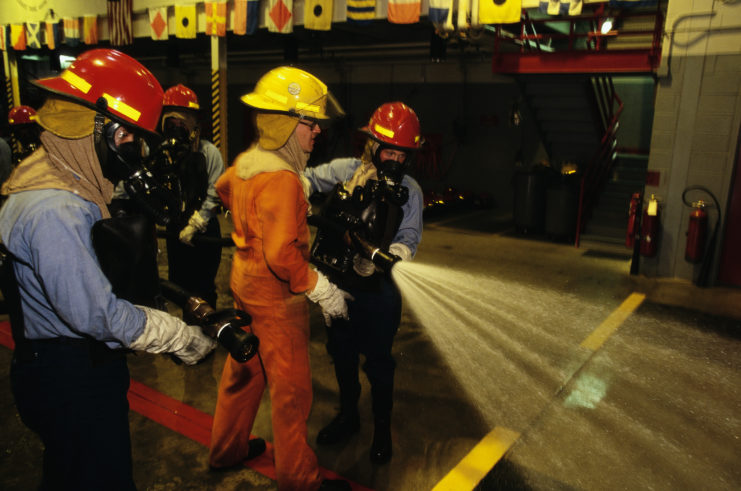
Following the incident, the Navy took a look at its firefighting training, which exposed a relaxed culture, the poor firefighting ability of sailors and the lagging response time to unplanned accidents.
The Aircraft Carrier Safety Review Panel, led by Rear Adm. Forsyth Massey and tasked with investigating the disaster, concluded that, “Poor and outdated doctrinal and technical documentation of ordnance and aircraft equipment and procedures, evident at all levels of command, was a contributing cause of the accidental rocket firing.”
What happened on the USS Forrestal that day caused the branch to overhaul its training program and install new regulations and improvements. In spite of the disaster, the Navy learned and provided integral firefighting training to its sailors that’s still in practice today. The aim was to prevent anything similar from ever happening again.
The USS Forrestal remained in service for several years after
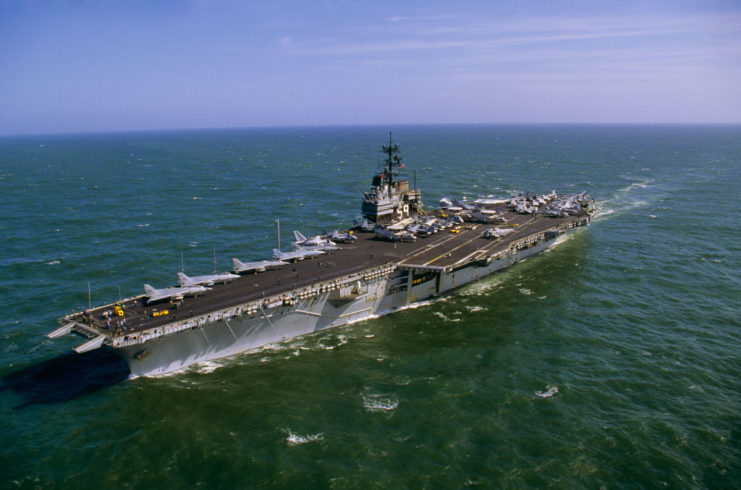
Surprisingly, the explosions that occurred on July 29, 1967 didn’t cause enough damage that the USS Forrestal couldn’t be repaired. Once given the OK to return to duty, the aircraft carrier was deployed to the Mediterranean a number of times, before serving in the 1981 Gulf of Sidra incident, participating in Operation Earnest Will in the Middle East, and being placed on standby during the Gulf War.
More from us: USS Nevada (BB-36): The Battleship That Survived Pearl Harbor and An Atomic Bomb
After providing air support during Operation Provide Comfort in 1991, Forrestal became a training carrier and was re-designated AVT-59. In 1993, she was decommissioned. Some 23 years later, in 2015, she was finally scrapped after failed attempts to turn her into a museum. Presently, a model of the vessel is on display in the “America’s War in Vietnam” section at the National Museum of the US Navy.
